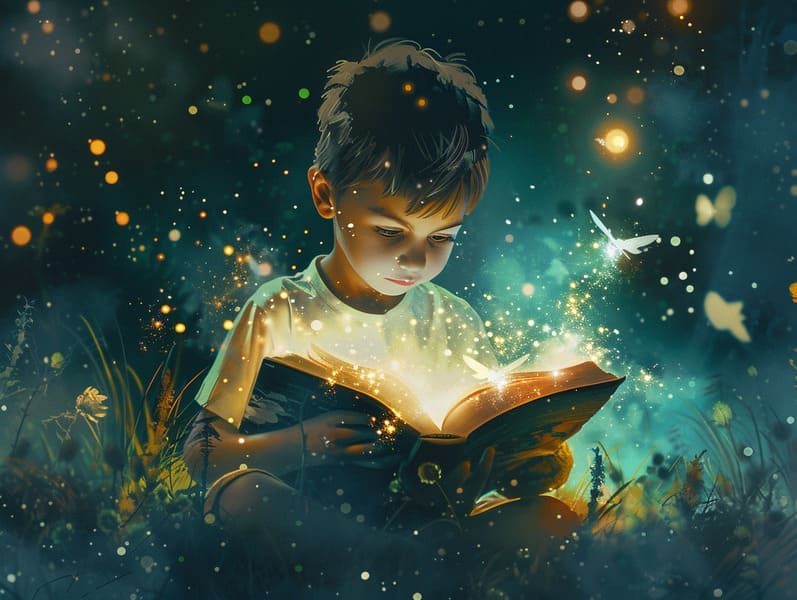
Fairy tales have enduring presence. These narratives have been spoken from one generation to the next far before they were ever put on paper. They sprang from a variety of civilizations, including Indigenous traditions. They were initially shared among grown-ups, often carrying themes and messages concerning the societal norms and beliefs of the time.
Jacob and Wilhelm Grimm, Jacob and Wilhelm (the Grimm brothers), were among the first to gather and publish many of these beloved stories. Their published works, "Grimm's Fairy Stories," included classics like "The True Bride," "The Bread Crumb Trail," and "Snow-White and Rose-Red," which have since become classics in the world of beloved fairy tales. Similarly, Hans Christian Andersen's fanciful fairy tales, such as "The Mermaid's Tale," and "The Duckling that Could," have captivated hearts worldwide, establishing their place in the pantheon of famous fairy tales.
Despite their historical roots, these stories remain as impactful as ever, especially as children's bedtime stories. These whimsical stories are now available in different formats, including colorful picture books, charming animations, and online storybooks.
Their unwavering allure can be attributed to several enchanting factors:
Important Morals: Ancient fairy tales often illustrate important moral lessons. Narratives like "The Shepherd Boy and the Wolf" teach the importance of truthfulness, while "The Race of the Tortoise and the Hare" exemplify the benefits of tenacity and unpretentiousness. These tales offer the young clear distinctions between good and bad, building their moral compass in a kind yet deep way.
Empathy and Awareness: Timeless fairy tales frequently feature beings facing challenges and problems, prompting young readers to identify with their struggles and boost their triumphs. For instance, "Beauty and Her Beast" points out the benefit of appreciating inner worth to recognize the inner spirit of a person, developing understanding and comprehension.
Cultural Comprehension: Many old fairy tales are saturated in the cultural contexts from which they arose. Delving into these tales can provide fascinating glimpses into different societies, advancing a sense of global insight and perception.
Fantasy and Imagination: The whimsical elements in classic fairy tales—spells and potions—encourage children’s dreaming abilities. These fairy tales transport readers to supernatural realms, generating fantasy-filled thoughts and a sense of astonishment that endures a lifetime.
Traditional fairy tales are not only charming but also instructive. They work as fantastical tools in promoting various cognitive and affective skills in kids. When ancient fairy tales are narrated, they enhance communication skills by showing new terms and elaborate sentence structures. This practice also nurtures hearing abilities and mindfulness, as young readers track the narrative, excited to see what happens next.
Furthermore, talking about the themes and characters of classic fairy tales can develop analytical skills and analytical skills. Young ones are led to discover patterns, predict happenings, and know cause and effect. These talks also contribute to kids reveal their thoughts and feelings, cultivating their emotional intelligence.
In today’s digital era, the presence of digital fairy tales has made these tales more reachable than ever. Web-based platforms and online apps extend comprehensive collections of ancient fairy tales that can be experienced or listened to anytime, anywhere. Fairy tales read aloud are particularly well-received, making available an interactive method for little ones to engage with these magical stories. Read-aloud books and spoken videos bring characters and settings to life, often complemented by mesmerizing musical scores and songs that improve the storytelling journey.
The lasting allure of timeless fairy tales lies in their ability to transform to today's world while sustaining their main lessons. Contemporary renditions of these stories often showcase more representative protagonists and modern settings, making them relevant to today’s audience. However, the key lessons of fearlessness, generosity, and equity remain unchanged, continuing to reach readers of all ages.
Ancient fairy tales also offer a sense of warmth and comprehensibility. They share a tidy narrative with a apparent beginning, middle, and end, often winding up with the ending of conflicts and the triumph of virtue over vice. This regularity can be reassuring for young ones, yielding a sense of firmness in an fluid world.
Ancient fairy tales continue to enthrall and edify new generations, maintaining their splendor and relevance in modern society. As bedtime stories for kids, they put out a perfect blend of wonder and wisdom, furthering moral values, empathy, and website creativity. The accessibility of online fairy tales and the well-liked nature of fairy tales voiced validate that these timeless stories remain acquirable to new generations.
By sustaining and releasing these stories, we continue to treasure the rich tapestry of cultural legacy and cultural heritage. Whether you are seeing a beautifully illustrated book, accessing a online collection, or listening through an read-aloud story, the beauty of popular fairy tales is always within reach. These fairy tales teach us of the endless spell of narratives and its ability to bind us across epochs and places.
No matter if you are viewing a vibrantly illustrated book, delving into a cyber collection, or listening to an audio story, the elegance of timeless fairy tales is always within reach.
These tales highlight of the lasting power of fairy tales and its ability to join us across centuries and lands, weaving a spell that captivates and teaches alike.